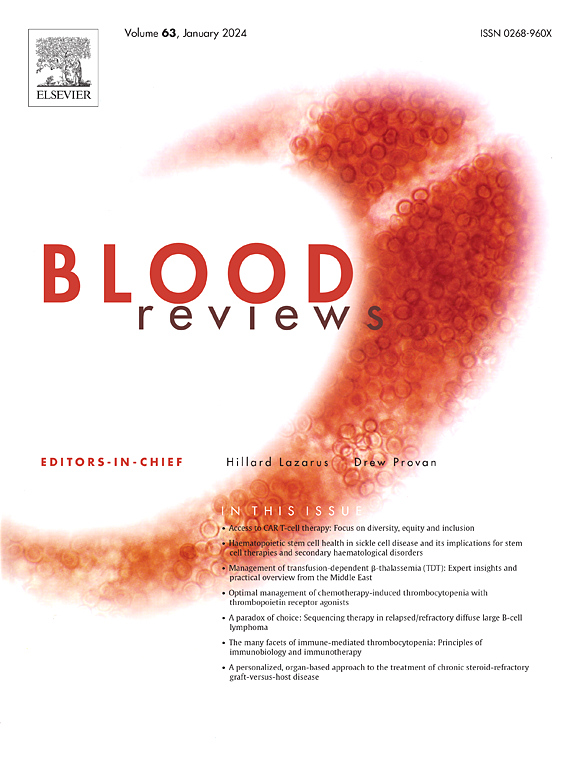hct受者移植获得性过敏:临床管理参考。
IF 5.7
2区 医学
Q1 HEMATOLOGY
引用次数: 0
摘要
移植获得性过敏(TAA)在儿童肝移植患者中是众所周知的。关于同种异体造血细胞移植(allogeneic hematopoietic cell transplantation, allo-HCT), TAA的临床特征尚未完全阐明。TAA的临床表现包括湿疹性皮炎、变应性鼻炎和哮喘。众所周知,变应性疾病可通过同种异体hct从过敏供体转移到非过敏受体。潜在的机制是过敏原特异性记忆B细胞的转移导致th2偏斜的过敏原特异性免疫反应。回顾性研究表明,脐带血移植(CBT)和免疫抑制剂他克莫司对TAA的发展有显著影响。报告的患病率因研究设计、诊断方法和研究人群而异,疑似过敏原在个体之间差异很大。前瞻性队列研究和进一步的机制调查有必要为TAA的患病率和危险因素提供强有力的证据。本文章由计算机程序翻译,如有差异,请以英文原文为准。
Transplant-acquired allergy in HCT-recipients: Reference for clinical management
Transplant-acquired allergy (TAA) is well known in pediatric patients undergoing liver transplantation. Regarding allogeneic hematopoietic cell transplantation (allo-HCT), the clinical characteristics of TAA have not been fully elucidated. Clinical manifestations of TAA include eczematous dermatitis, allergic rhinitis, and asthma. It is known that allergic diseases are transferable from allergic donors to non-allergic recipients via allo-HCT. The potential mechanism is the transfer of allergen-specific memory B cells resulting in Th2-skewed allergy-specific immune responses. Retrospective studies have suggested that cord blood transplantation (CBT) and the immunosuppressant tacrolimus have a significant impact on the development of TAA. The reported prevalence varies according to study design, diagnostic methods, and study population, and the suspected allergens vary widely among individuals. Prospective cohort studies and further mechanistic investigations are warranted to provide robust evidence on the prevalence and risk factors associated with TAA.
求助全文
通过发布文献求助,成功后即可免费获取论文全文。
去求助
来源期刊

Blood Reviews
医学-血液学
CiteScore
13.80
自引率
1.40%
发文量
78
期刊介绍:
Blood Reviews, a highly regarded international journal, serves as a vital information hub, offering comprehensive evaluations of clinical practices and research insights from esteemed experts. Specially commissioned, peer-reviewed articles authored by leading researchers and practitioners ensure extensive global coverage across all sub-specialties of hematology.
 求助内容:
求助内容: 应助结果提醒方式:
应助结果提醒方式:


